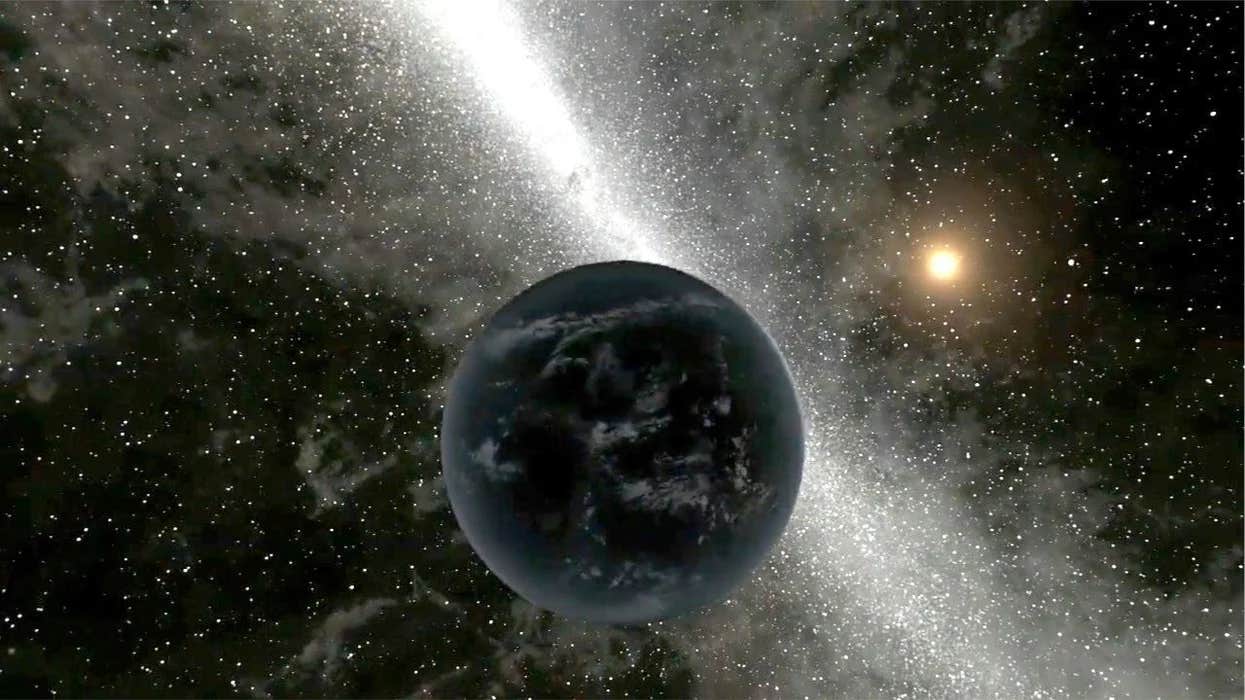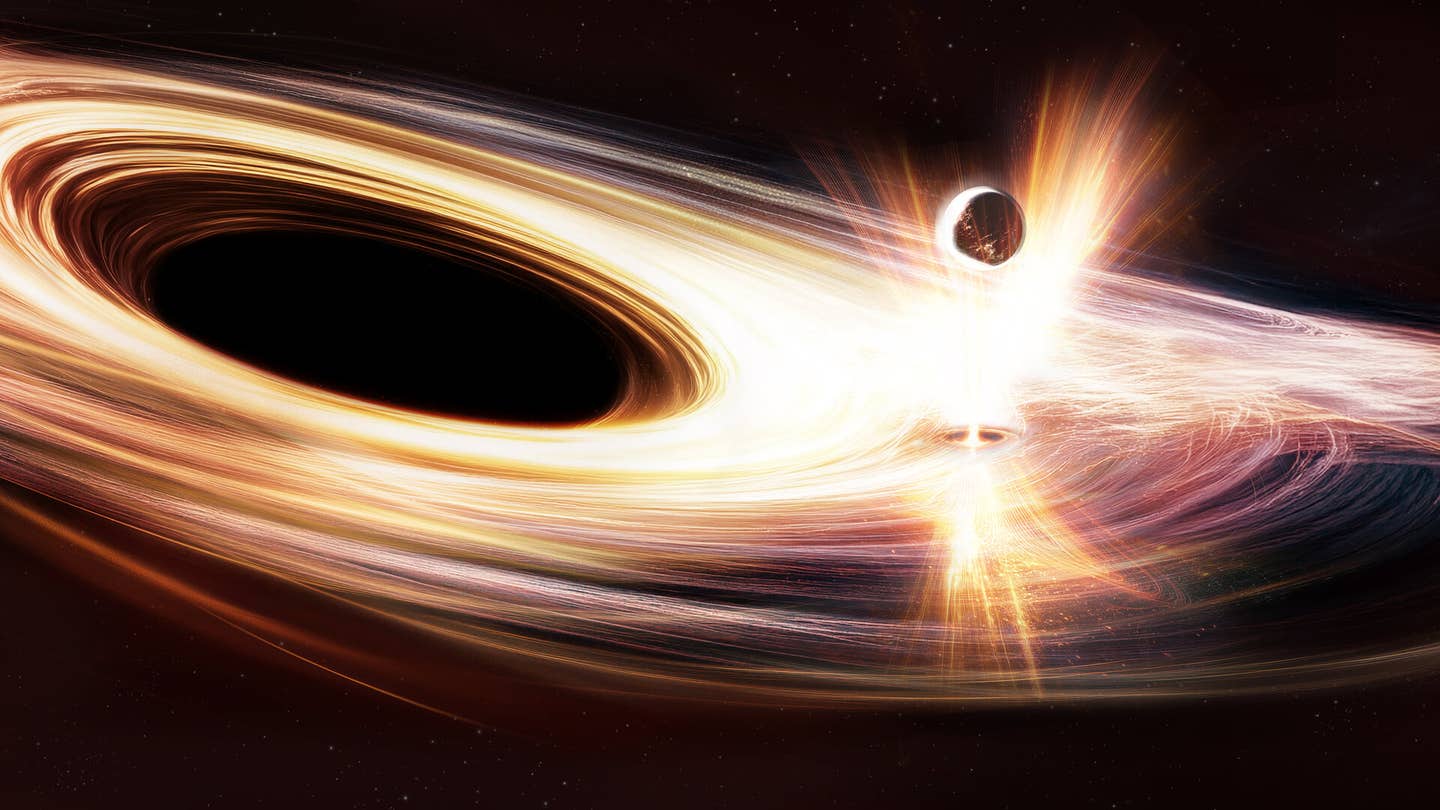Jupiter-sized interstellar visitor may have reshaped our solar system
New research reveals a large rogue planet may have shaped the Solar System’s orbits, offering insights into planetary formation and dynamics.

A rogue planet passing through the Solar System could explain the eccentric orbits of gas giants, reshaping theories of planetary evolution. (CREDIT: ZMG – Amaze Lab)
For centuries, astronomers have sought to understand the complex dance of planetary motion. The ancient belief that planets followed perfect circular orbits aligns intriguingly with modern theories of planet formation, which suggest that planets emerge in nearly circular, coplanar orbits from protoplanetary disks.
Despite this, the slightly eccentric and tilted orbits of the Solar System’s gas giants remain an enduring mystery. New research proposes that a single cosmic event, such as a flyby of a massive interstellar object, could provide answers.
Planetary orbits today reflect billions of years of interactions. At their formation, planets coalesced from a rotating disk of gas and dust around the Sun. Conservation of angular momentum shaped their orbits into a flat plane.
As planets grew, gravitational interactions within this disk caused migrations, with planets shifting inward or outward. These migrations and interactions often altered eccentricities and inclinations, occasionally ejecting smaller protoplanets entirely.
While planet-planet interactions were common, rare visits by interstellar objects likely played pivotal roles. The most notable recent example, ‘Oumuamua, discovered in 2017, was the first confirmed interstellar visitor.
Its unusual shape and acceleration fascinated scientists, but the event also highlighted how such objects could influence planetary systems. A recent theory now links the orbits of our gas giants to a massive interstellar visitor.
A study led by Garrett Brown from the University of Toronto explored this idea. The team proposed that a single encounter with an object between two and fifty times the mass of Jupiter could explain the observed eccentricities and tilts of the Solar System’s giant planets.
Related Stories
Using advanced simulations, they found that such an object, passing at a perihelion distance of less than 20 astronomical units and with a hyperbolic excess velocity under 6 kilometers per second, could produce orbits similar to those seen today.
Their calculations suggest a one-in-one-hundred chance that this scenario occurred—significantly higher odds than other existing theories.
The flyby hypothesis addresses gaps in traditional models. Current theories struggle to explain why the orbits of Jupiter, Saturn, Uranus, and Neptune deviate from perfect circles and alignments.
Internal interactions among planets and resonances provide partial answers but fall short of fully accounting for the observed dynamics. External perturbations, such as those caused by interstellar objects, offer a compelling alternative.
The study’s findings also suggest broader implications for planetary science. The presence of rogue planets—massive, free-floating bodies untethered to any star—may be more common than stars themselves in the galaxy. Occasional encounters between such rogue planets and established systems could have shaped planetary architectures not just in our Solar System but across the Milky Way.
Evidence of interstellar visitors supports this idea. In addition to ‘Oumuamua, the discovery of the interstellar comet 2I/Borisov in 2019 confirmed that such objects periodically pass through our system.
The researchers theorize that if a rogue planet once traversed the Solar System, it could have altered not just the orbits of gas giants but also those of terrestrial planets like Earth and Mars. Further exploration into these effects could yield insights into the early conditions of our planetary neighbors.
Close stellar encounters may also reinforce these effects. Within a 6-parsec radius of the Solar System, 131 stars and brown dwarfs reside. Six of these are predicted to make close approaches to our Sun within the next 50,000 years. Such events could dislodge objects from the Oort Cloud, sending them hurtling toward the inner Solar System and potentially influencing planetary orbits further.
The study by Brown’s team builds on foundational work in planetary dynamics. Secular perturbation theory, which examines the long-term variations in planetary orbits, has shown that the major axes and orbital patterns of planets remain largely stable over billions of years.
However, the origins of the eccentricities and inclinations of the giant planets remain elusive. Brown’s hypothesis bridges this gap by introducing the possibility of an external perturber—a rogue planet—that temporarily disrupted the system before continuing on its journey.
Although the flyby hypothesis is compelling, it remains a theoretical model that requires further validation. Peer review and additional simulations will test the robustness of its predictions. Observational campaigns could also identify remnants or secondary effects of past interstellar visitors, lending credibility to the theory.
The implications of rogue planetary encounters extend beyond the Solar System. They suggest a dynamic and interconnected galaxy, where planets and interstellar objects frequently influence one another. By understanding these interactions, scientists can better grasp the processes that shape planetary systems and the potential for life-sustaining environments elsewhere in the universe.
The study’s broader significance lies in its ability to challenge existing paradigms. Traditional models of planetary formation and migration have focused largely on internal interactions. Introducing external factors, such as interstellar visitors, adds a new dimension to our understanding. It underscores the importance of viewing planetary systems as part of a larger cosmic ecosystem, where even rare events can leave lasting imprints.
Future research will likely focus on identifying other systems where rogue planets have played similar roles. Advances in telescopes and detection methods could reveal more interstellar objects, providing opportunities to study their interactions with established planetary systems.
As scientists continue to uncover the mysteries of planetary motion, they may find that the answers lie not just within our Solar System but in the vast expanse of interstellar space.
Note: Materials provided above by The Brighter Side of News. Content may be edited for style and length.
Like these kind of feel good stories? Get The Brighter Side of News' newsletter.
Joshua Shavit
Science & Technology Writer | AI and Robotics Reporter
Joshua Shavit is a Los Angeles-based science and technology writer with a passion for exploring the breakthroughs shaping the future. As a contributor to The Brighter Side of News, he focuses on positive and transformative advancements in AI, technology, physics, engineering, robotics and space science. Joshua is currently working towards a Bachelor of Science in Business Administration at the University of California, Berkeley. He combines his academic background with a talent for storytelling, making complex scientific discoveries engaging and accessible. His work highlights the innovators behind the ideas, bringing readers closer to the people driving progress.



